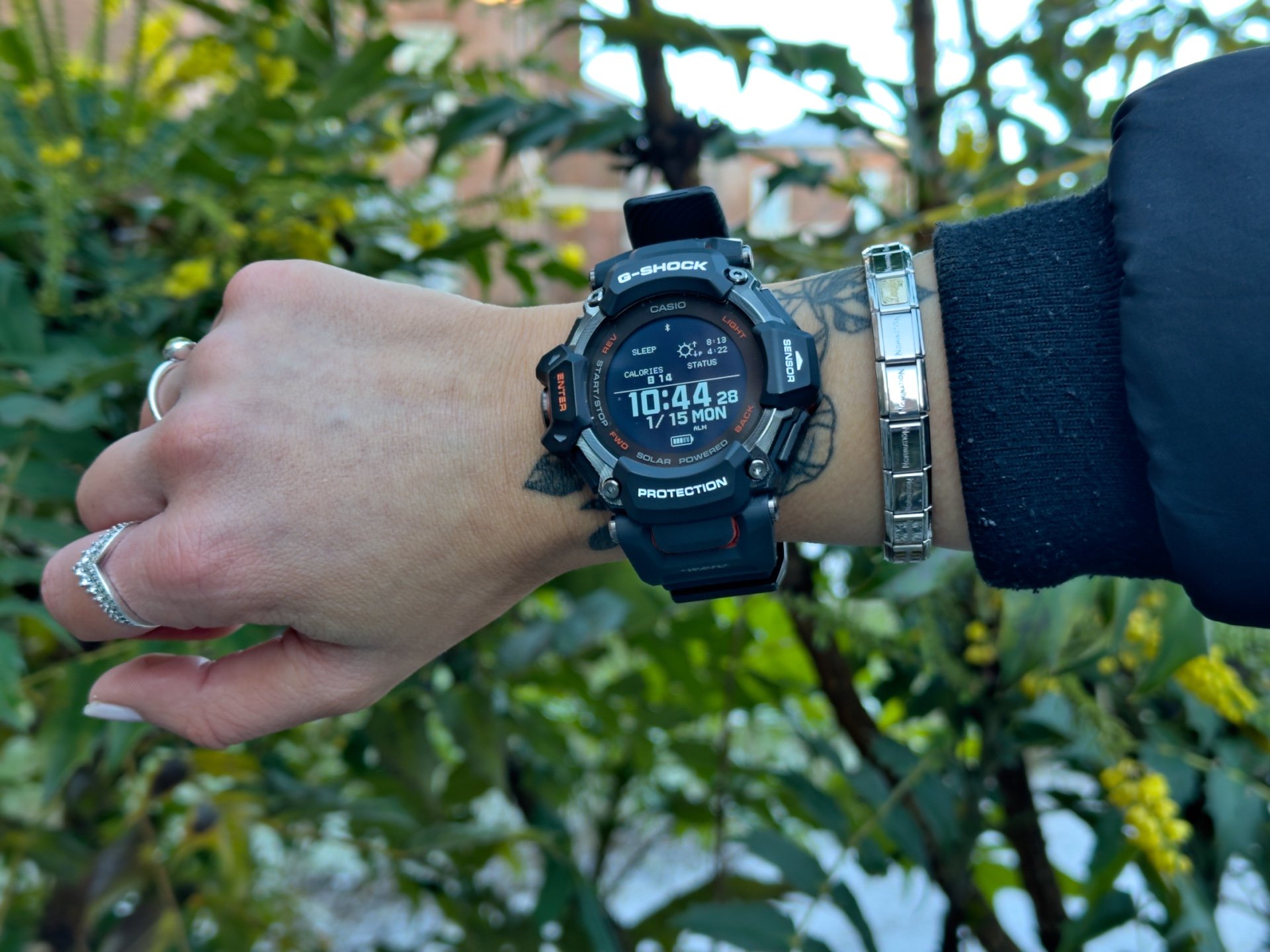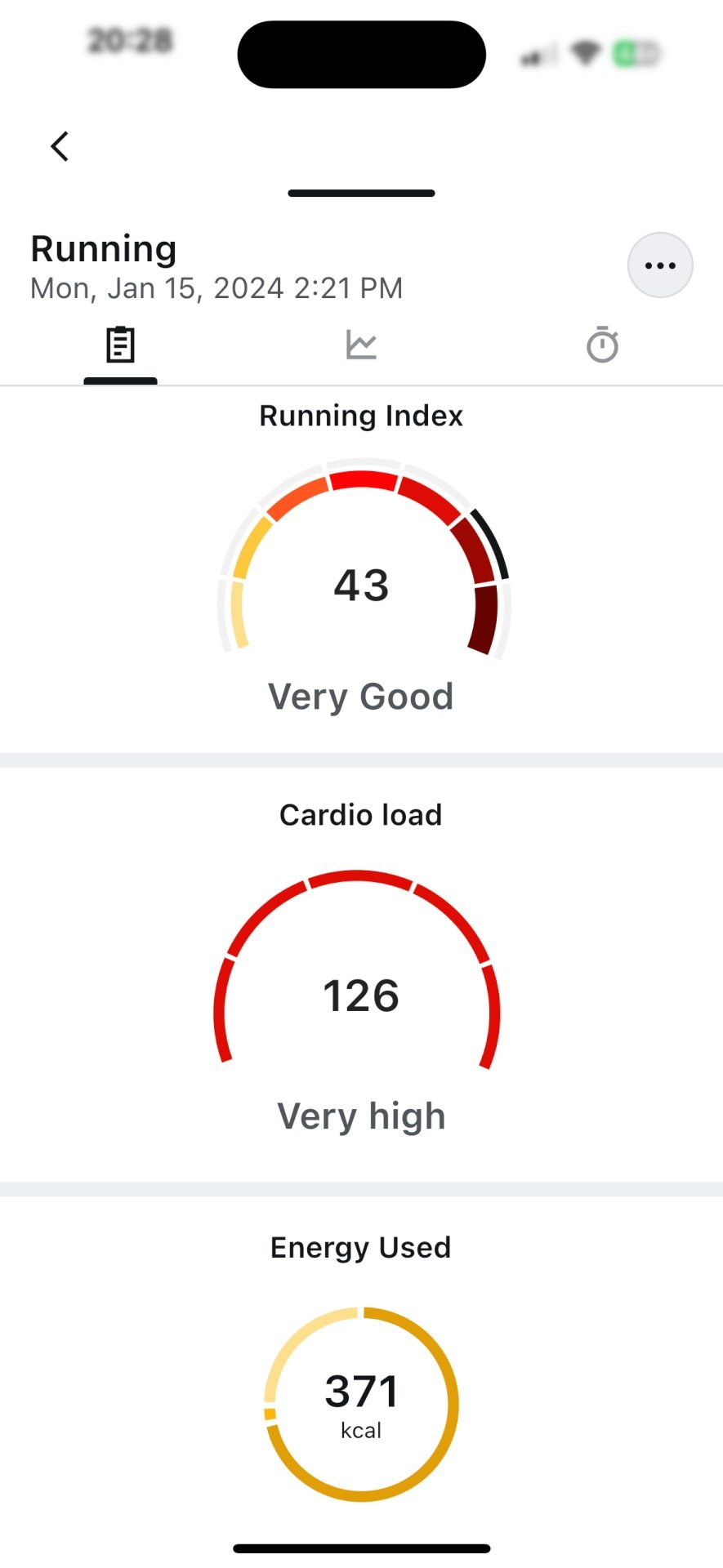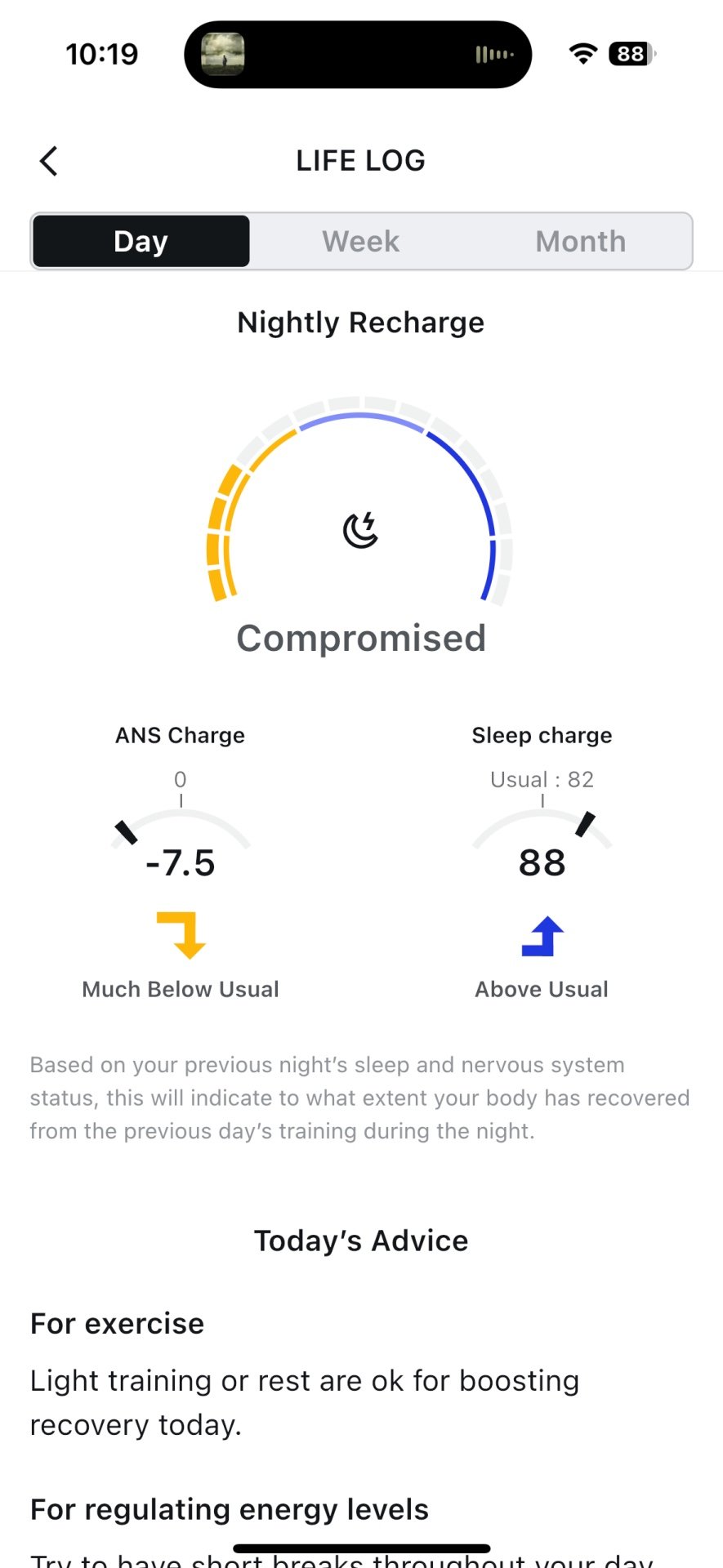Casio G-SHOCK GBD-H2000 review
0 other reviews
Casio G-SHOCK GBD-H2000 Verdict
The pros
- HR readings were accurate to the gold standard test – compared to the Polar H10 chest strap
- Smart alarm – whilst monitoring your sleep, it registers when you’re in the lightest sleep stage, closest to your ideal wake-up time
- Looks great – G-Shock has an iconic design with protective lugs, It is very eye-catching
The cons
- Polar supported but could do better with the data i.e the cardio load information
- World time zone widget – waste of space – what's the point in this?
- No third party app sharing
Facts / Specs
Who should buy the Casio G-SHOCK GBD-H2000 ?
Anyone loyal to the G-Shock brand and wants to keep the protective lug look. Runners who want a casual tracking of their activities but are not interested in using any data or training for anything specific. The solar charging capabilities perhaps lend itself to someone who needs to spend a significant amount of time not thinking or worried about charging.
Who should not buy the Casio G-SHOCK GBD-H2000 ?
A new runner or someone entering the world of health and fitness who needs extra support or guidance through workouts or through what all the metrics mean on the app. Neither is it for a runner following a rigid schedule from training peaks or using Strava for example because none of the data is transferable.
Casio G-SHOCK GBD-H2000 Design and Hardware

The G-Shock GBD-H2000 looks like an absolute beast. Considering it’s a slimmer design than the previous model, the H1000, the bezel still has the eye-catching shock-absorbing bumpers.
It’s just 63 grams in total weight despite being 19.4mm off the wrist, in a 59.6 mm by 52.6 mm casing of the watch face itself. It’s definitely a large watch, probably fitting to a male wrist better than a female. While it was comfy for me to wear day to day, I had to wear the watch using the shortest strap hole possible.
The bezel, casing and straps are made from an eco-friendly bio-based Resin (such as corn) which significantly aids the watch’s weight improvement from the H1000 (which featured stainless steel and sat at 101 grams in total weight). Note that the H2000 straps have a wedge fitted between the straps and bezel to assist comfort and get closer contact to the skin – which will only assist the HR readings etc).
The screen itself is easy to MIP digital display and adherers to Casio display characteristics – a very basic, digital, always-on screen that can be seen more clearly with the LED lighting at the press of a button. The home screen can be modified to display the information you want which is great and it holds a lot for a tiny screen.

I tested the black/orange option, and the splash of colour is very tasteful – not too much to be garish but enough to have a distinctive style – edging around the buttons, the wedge on the underside of the bands and some text on the watch itself.
As for the heart rate readings – G-Shock and Casio take their first step into the HR readings phenomena via LED lights – the data is then powered by Polar. More on this later.
The H-2000 is 200-meter water resistant, and G-Shock states the watch is protected with, well, protective lugs – “The toughest watch of all time,” however, I tested the protective lugs on their capability to protect the watch from a third-floor drop – and the screen wouldn’t come on again…
Casio G-SHOCK GBD-H2000 On the Run

The most notable thing about being on the run is that there’s no way to lock the screen – a serious oversight considering its bulk and likeliness to get caught between sleeves and clothing in the winter.
The LED’s struggled significantly to read heart rate through a tattoo so I had to wear the watch on the underside of my wrist while sleeping and working out – another reason why this watch needs a screen lock button!
Before we get to the run, waiting for the GPS signal to lock onto the watch was a joke. It took a good few minutes to connect and you can’t do anything but wait (if you try to continue, a warning screen comes up).
But once you’ve got going, you have four watch faces to choose from – each workout screen is customisable through the app to each sports profile too, which I’m sure will come in handy however I kept to the the default, which is:
- distance – split time – pace per km.
- lap distance km – lap time – lap pace km
- time lapsed – HR reading and it’s zone – target HR range
- time of day – split time km
To pause or stop the workout click enter however, it is very good and accurate at auto-pausing a run when you take a breath – even to tie your shoes or stop to stroke a dog.
There is NO navigation assistance, yes the watch has GPS and even down to GPS time correction (thanks to GPS, Russian GLONASS, and Japanese “MICHIBIKI” QZSS) systems) but it will not help you – at all – if you get lost.
However, it will sense and give data on air pressure/altitude and keep count of your steps (accelerometer). I guess this is useful for an advertiser… with a separate map. The watch has a compass though – just not accessible in training mode.
Casio G-SHOCK GBD-H2000 After the run: software and connectivity

Post-run run the data available on the watch is basic but it runs through the majority that runners want to know or look through whilst cooling down/stretching.
Theres 7 data screens:
- date/time of run – length of time ran – distance and km split
- heart rate data (max and average bpm) – cardio load score *
- energy used in calories – percentages of carbs/protein/fat burned *
- cadence (max, average) – stride
- pace (best, average) – running index
- altitude (max) – incline – decline
- lap number
The heart rate, cardio load, energy used and its breakdown are all features that are supported by Polar and characteristics you would find in the Polar fitness watch range.
Post-run data on the app comes with a colour-coded map (with corresponding heart rate zones), detailed graphs of pace, elevations, cadence, distance, and heart rate – with another tab for km breakdown should you want to dive deeper into your route or performance – a great, clear understanding of how your run went and where you can improve, km by km.
My problem with this? You cannot change the system to measure in miles instead of km. Why?!
Casio G-SHOCK GBD-H2000 Other activities
You cannot import or export data out of the ‘Casio Watches’ app. Nothing. That goes for workouts, runs.. nothing. So it essentially just tracks what you do, over a ‘fitness watch’ – if that makes sense?
That being said it is seriously limited in its sports profiles that it tracks – running, trail running, walking, gym, open swimming, pool swimming, biking, and an interval timer – a serious lack to its competitors in this market.
Casio G-SHOCK GBD-H2000 Accuracy and battery life
Accuracy
Considering the G-Shock H2000 utilising Polar HR data I thought it was fitting to test it against its gold standard – the H10 chest strap – and for the most part, it was accurate.
On a particular run, the average HR readings were within 6 bpm of each other, while the max HR readings were 1 beat off, it’s impressive.
Getting onto the GPS element the H2000 measures a 7.25 km run (4.5 miles) an average pace of 6:55/km (11:02 minute/mile) and a max pace of 4:56/km (8:04 minute/mile) recording 50:16 minutes of moving time.
Whereas the Polar Beat app with the chest strap measured a 4.72-mile run, in 55:24 minutes total. Average pace of 11:44 minutes/mile and max pace of 8:20 minutes/mile, burning a total of 481 calories.
The H2000 does have a VERY accurate auto-pause feature which accounted for the best part of 5 minutes of total stoppage time. But as for the rest of the details, there are discrepancies in all the data collected – even down to the cardio load on the app… by the same manufacturers.
Battery life

It had 50% straight out the box which lasted 7 days of full use with a daily workout before warning me it was low – excellent!
What helps matters is that the H2000 is solar-powered – charging on the go or with artificial light is a win-win! Charging as it’s being used that’s great stuff! Perfect for ultra-runners in multi-stage or multi-day events or adventures who are going off the grid without the opportunity to charge their watch all the time.
There is a monster USB cable though and 2 hrs to 100% battery is accurate should you need the backup.
Casio G-SHOCK GBD-H2000 Other interesting functions

The app – Every time you open the app it lands on a marketing/sales type of page that is a sure-fire way to get people who have already invested in the brand, annoyed very quickly. It emphasizes the brand over the user and their data, their importance – let alone the annoying connection issues when syncing the watch data. – more often than not I got the ‘H2000 connection terminated’ notification before it reconnects about a minute later – annoying.
It has three windows – home (marking) – my watch (where you connect devices) – my page (your life log and training sessions sit here)
Life Log – this offers up daily tracking of your steps, calories burnt through activity, cardio load status, strain and tolerance, nightly recharge and any advice for the day, nervous system status and your sleep breakdown – daily, weekly and monthly data.
It’s a great collection of information to see how your body is working/recovering however it is A LOT of lists and numbers – if you don’t know what the data means, then it’s rather irrelevant. You do get a brief explanation under cardio load, night recharge and daily advice on how to train but other than that it’s not beginner-friendly.
The cardio status & breathwork features are powered by Polar but seem to be much more basic than what Polar provide – a basic color-coded circle with a score for the H2000 over a graph and explanation on the Polar Flow app.
Smartphone notifications – Opt for beeps, vibrations, both or off. To be honest this was super annoying – the notifications that appeared on the watch face were irritatingly delayed by about 2 minutes. By then I’ve already read the texts, emails whatever. You can read them on the watch but it is tiny and you can’t reply. The notifications just end up taking up memory space – are they really needed? The rest of the watch has moved away from the smartwatch vibe so why add this feature?
Smart alarm – this feature (also found on the Fitbit) is wonderful through monitoring your sleep stages closely it finds the optimal opportunity to wake you up in your lightest sleep part of the cycle. On several occasions, it woke me 30 minutes before my alarm and I felt refreshed not groggy.
I feel that the design of this watch is its main selling point or ‘feature’ worthy of note – it’s the only thing that stands out over its competitors as a stylistic option over a typical-looking smartwatch with sleek designs and touch screens.
Casio G-SHOCK GBD-H2000 Conclusions

I was expecting a lot more from this watch through its advertisement.
A team up with Polar and GPS capabilities I thought I’d be treated to an adventurer’s dream watch but it let me down with such limited features and the fact there are zero third-party app link-ups.
The app is poor, the screen information is poor, and yes run data is thorough but I can’t do anything with it.
For its price point, I think it’s punching way beyond its weight. This is definitely a glorified fitness tracker… if that.
Reviewed by Louise
Louise is an avid trail runner (after completing ‘London2Paris:10 marathons in 10 days’ on roads; her knees much prefer the scenic route these days). She has a degree in Sports Therapy, works as a therapist for many sports (including GB Triathlete Veterans ) and taught at a University in the UK. A coach, certified blind-guide runner, ultra-marathon-er? and a Women’s wellbeing writer; her anecdotes pack a hefty punch.
User feedback (0)
Recommended reviews


ASICS Gel Kayano 30 Review




















